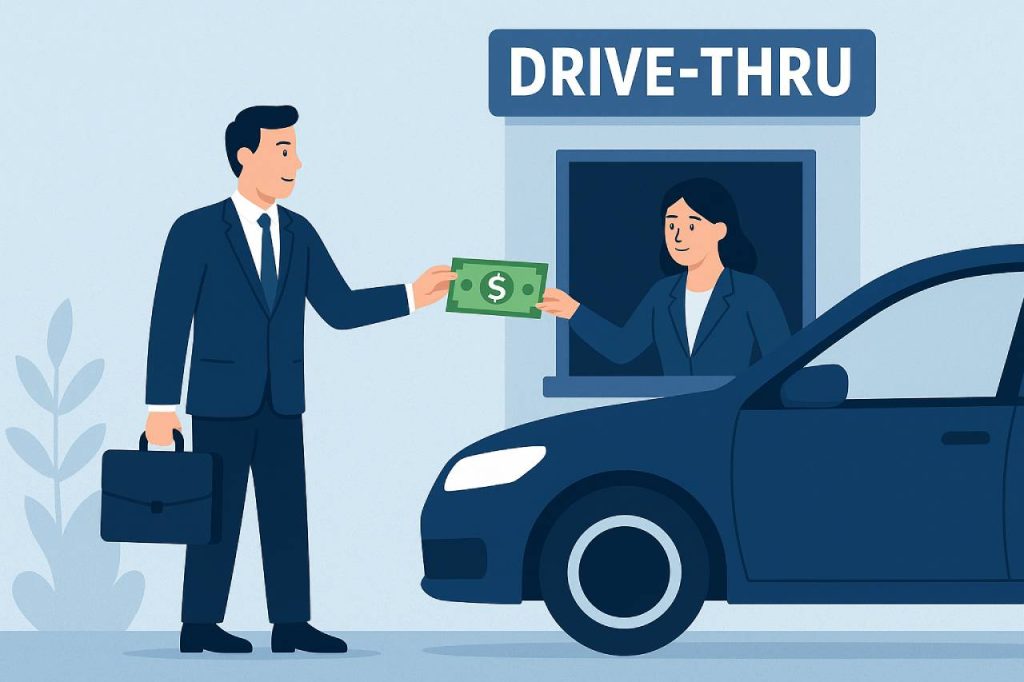Drive-thru traffic has gone from 40% to 60% and now in many cases 80% in terms of where QSR revenue is getting generated. Yet, as quick service restaurants continue to be built, most are not changing any of their investment decisions during the buildout. They continue to spend more on the indoor setup and décor rather than optimizing their drive-thru setup. However, consumer behavior that seeks speed and convenience is here to stay. So, while you consider where your return on investment will come from, you should look no further than your drive-thru lane.

Simply put, your capital expense should fall loosely in line with where much of your business is coming in. If it happens to be outside your four walls, then that is where the money should go.
Where You Should Invest in the Drive-thru Lane
1- Drive-thru menu boards
Whether digital or traditional backlit, executing a clear and straightforward message through the design is critical for quick decisions and turnaround times. Digital drive-thrus offer more in the way of targeted messaging by time of day and can also assist in inventory control and test marketing of new products.
2- Drive-thru headset systems
Not all headset systems should be considered equal. Consumers should do their research when it comes to this. If you go cheap, there are a few certainties, 1- your employees and customers will get frustrated with the sound quality, 2- the time you spend with support will irk you and 3- you’ll be replacing the system sooner than you’d like. The new headset systems have AI capabilities, enhanced noise cancellation and other features that make communicating among fellow employees and customers crystal clear.
3- Traffic analysis and flow
While there may be environmental factors and/or zoning limitations, you should work with a professional to best “stage the scene” for your drive-thru. When feasible, dual lanes should be considered, however the ability to stack cars to manage your queue and minimize perceived downtime should trump mostly everything else.
4- Order confirmation boards (OCB)
These are the screens that display your order back to you. While at the mercy of the person making the food for 100% order accuracy, these screens reduce errors that may be caused by poor communication. The less you have to re-make food, the more money is in your pocket. Tools that align drive-thru orders with prep stations cut waiting times and improve food quality.
5- Kitchen Technology
Making sure you select a point-of-sale (POS) system that adapts to the drive-thru can be of much value. Not all POS systems are set up for drive-thru operations that many times must distinguish between various order from “front of house,” lane A and lane B of the drive-thru. The correct POS system will manage this for you. In addition, the use of a drive-thru timer will keep your employees on track preparing and executing the orders as quickly and accurately as possible.
Save Money Inside!
With the majority of your guests going through the drive-thru and only 20-40% of customers coming inside, your indoor spending should be adjusted accordingly. Some of these changes are more applicable as you look for locations vs. working with what you already have.
Go with a small location! Doing this one simple thing will check a lot of boxes. Less square footage means, less employees, less maintenance, less rent, reduced AC and HVAC expenses, lower insurance rates, etc. It is cheaper and easier to manage.
Streamline your seating. No need for packed tables and chairs. Go with something more modular with durable furniture that has a neutral look to work with passing fads and design concepts.
Less is more on the inside. Focus on the function of your signage and equipment more than the name on the label. Expensive décor overhauls are not needed. Clean and crisp can be accomplished with inexpensive options.
Smaller counter service. Why pay for 4-6 POS terminals when one may do. With most orders outside, scaling back your counter space and order takers reduces employee needs while still meeting your customer’s needs.
Other ideas. Restrict your bathroom access to paying customers only (use a pin pad). This will limit the number of loiters and people coming in to use your facilities. This will lessen maintenance as well. Also, napkins, cutlery and condiments should be handed out in a limited supply. The indoor crowd does not need to full line their pockets for use at home later in the week or month.
Summary
This may be the most concise summary yet. Your drive-thru is where your customers go. That is where your capital improvements should be going as well. Limiting interior space and minimizing décor costs will only further your financial “take home.”
Do you need help making these determinations for your business? Give us a call today at 888-235-2579, email us at info@origindisplays.com or contact us here to speak with a solutions specialist.